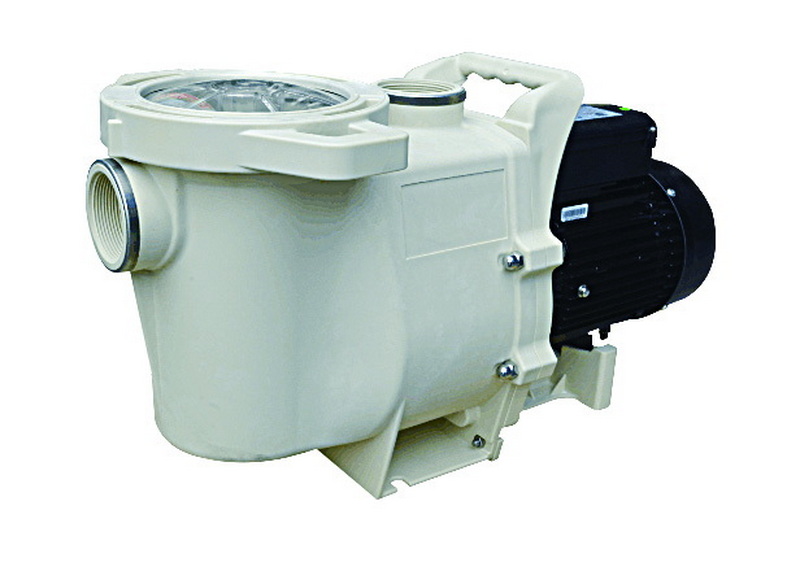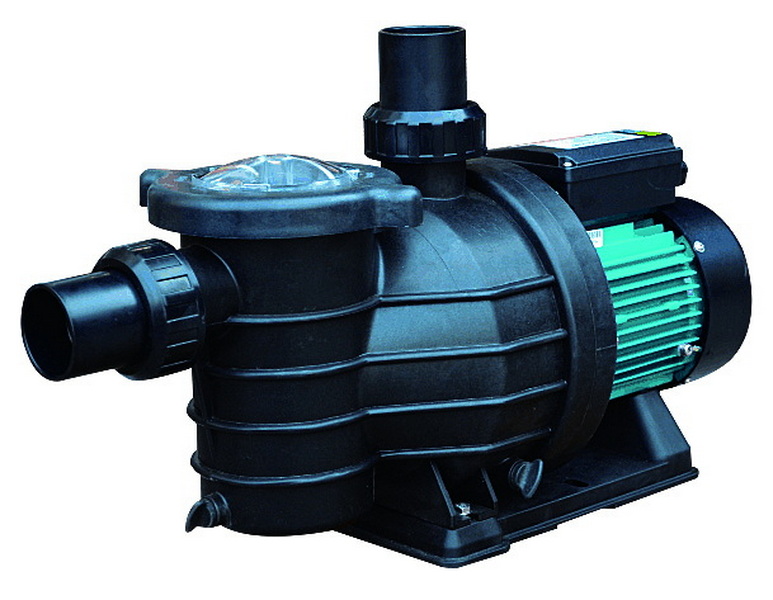Views: 222 Author: Tina Publish Time: 2025-10-18 Origin: Site








Content Menu
● What Is a Pool Pump and Why Is It Important?
● Types of Pool Pumps and Their Energy Consumption
● Calculating Your Pool Pump's Electricity Usage
● Factors Affecting Pool Pump Electricity Usage
● How to Reduce Electricity Usage for Pool Pumps
>> 1. How much does it cost to run a pool pump per month?
>> 2. Can I use solar energy to power my pool pump?
>> 3. How long should a pool pump run daily?
>> 4. Are variable speed pumps worth the investment?
>> 5. How can I find my pump's wattage?
Owning a swimming pool is a joy, but it comes with maintenance responsibilities, especially keeping the water clean and clear. At the heart of this maintenance is the pool pump, an essential component that circulates and filters pool water. A common concern among pool owners is how much electricity these pumps consume monthly, influencing energy bills considerably. This comprehensive guide will explore the electricity usage of pool pumps per month, factors affecting consumption, methods to calculate and reduce usage, and practical tips for energy efficiency.

A pool pump is a device that circulates pool water through the filtration system to maintain cleanliness by removing debris and impurities. It operates by pulling water from the pool, pushing it through a filter, then returning clean water back. Because pool pumps often run multiple hours daily, their energy consumption can significantly impact monthly electricity bills. Understanding their usage helps pool owners budget and save energy.
Pool pumps come in various types, each with distinct energy usage profiles based on design and operation:
1. Standard (Single-Speed) Pool Pumps
These pumps run at a constant speed, typically consuming between 1,500 and 2,500 watts when operating. If a 2,000-watt pump runs for 8 hours daily, monthly electricity usage would be approximately 480 kWh (calculated as 2,000 watts × 8 hours × 30 days = 480,000 watt-hours or 480 kWh). These pumps, while straightforward, consume more energy since they operate at full power constantly.
2. Variable Speed Pool Pumps
Variable speed pumps can run at different speeds depending on pool needs. At lower speeds, they may consume around 300 watts, drastically reducing power use. For example, running for 8 hours daily at 300 watts results in about 72 kWh monthly (300 watts × 8 hours × 30 days = 72,000 watt-hours or 72 kWh). This efficiency leads to significant savings and is increasingly favored in modern pool systems.
3. Dual-Speed Pool Pumps
These pumps offer two fixed speed settings: high for cleaning and circulation, and low for filtration. By using the lower speed for most cycles, energy consumption is reduced compared to single-speed pumps, though they may not save as much as variable speed models.
To estimate your pool pump's monthly electricity consumption, you can use this simple formula:
Watts×Hours per day×Days per month÷1000=kWh per month
Example: For a 1,500-watt pump running 8 hours per day over 30 days:
1500×8×30÷1000=360 kWh per month
You can typically find your pump's wattage on its motor label or the manufacturer's manual. When wattage isn't listed, calculate it by multiplying voltage by amperage (e.g., voltage 230V × amperage 6.5A = 1,495 watts).

Several factors influence how much electricity your pool pump uses monthly:
- Pump Horsepower and Motor Efficiency: Higher horsepower pumps generally use more power, though efficiency can vary. Energy-efficient motors consume less electricity while maintaining performance.
- Daily Run Time: The total hours the pump runs directly affect consumption. Most pools require running the pump 6 to 12 hours daily for effective circulation.
- Pump Speed Settings: Variable and dual-speed models save energy by running at lower speeds during routine filtration.
- Pool Size and Turnover Rate: Turnover is the time required to circulate the entire pool volume through the filter. Larger pools or those requiring faster turnover need more powerful pumps and longer run times.
- Pipe and Plumbing Head Loss: Friction and resistance in pipes (measured as "head") require the pump to work harder, consuming more energy.
- Local Electricity Rates: The cost of electricity varies by location, influencing how much running your pool pump costs but not the amount of electricity used.
There are practical steps pool owners can take to minimize electricity costs:
- Upgrade to Variable Speed Pumps: These can reduce energy use by up to 80% due to adjustable speeds tailored for pool needs.
- Run Pumps During Off-Peak Hours: Many electric utilities offer lower rates during night hours which can reduce bills.
- Optimize Run Time: Limit pump operation to essential periods without compromising water quality.
- Regular Maintenance: Keep filters clean and pumps serviced to ensure efficient operation.
- Use Pool Covers: Reduces heat loss and evaporation, subsequently lowering filtration needs.
- Consider Solar Pool Pumps: Solar-powered pumps can dramatically reduce reliance on grid electricity.
Knowing how much electricity your pool pump uses per month allows you to manage your pool's energy costs effectively. Standard single-speed pumps consume more electricity, while variable speed pumps offer noticeable energy savings. By selecting the right pump, optimizing run times, and maintaining your pool, you can enjoy clear water without high electricity bills.
If you are looking for high-quality, intelligently manufactured sand filters, DE filters, cartridge filters, pumps, LED lights, and accessories with tailored OEM services for international brands, our Chinese factory provides top-tier filtering solutions and products with advanced automation. Contact us to enhance your pool equipment offerings with reliable and energy-efficient solutions.

Costs depend on electricity rates and pump efficiency but typically range between $30 and $150 monthly.
Yes, solar-powered pool pumps are available and can significantly reduce or eliminate electricity bills.
Most pools require 6 to 12 hours daily for proper filtration, but this varies by pool size and usage.
Yes, they save energy, extend pump life, and provide quieter operation.
Check the motor label or manufacturer's manual. Wattage can also be calculated using voltage and amperage.
[1](https://www.agwayenergy.com/blog/how-much-electricity-does-a-pool-pump-use/)
[2](https://www.hayward-pool.co.uk/article/maintenance-of-my-pool/pool-annual-cost-electricity)
[3](https://www.togethernrg.com/post/estimating-your-pool-s-electricity-cost-a-guide-for-pool-owners)
[4](https://www.energybot.com/energy-usage/pool-pump.html)
[5](https://www.jackery.com/blogs/knowledge/how-much-it-costs-to-run-a-pool-pump)
[6](https://www.pool.shop/blog/calculating-the-consumption-of-a-swimming-pool-heat-pump/)
[7](https://docs.nrel.gov/docs/fy12osti/54242.pdf)
[8](https://castawaypoolservice.com/pool-pump-electricity-consumption/)
[9](https://insights.made-in-china.com/The-Ultimate-Guide-to-Swimming-Pool-Pumps-Selection-Usage-Benefits-and-Maintenance_jfDGkHJTumIh.html)
This guide explains how to safely increase pressure on a pool pump by restoring healthy water flow. Learn to diagnose low pressure, clean baskets and filters, fix air leaks, adjust valves and pump speed, and know when equipment upgrades or gauge replacement are necessary.<br />
This in‑depth guide explains how much it costs to replace a pool pump, covering typical price ranges, pump types, labor charges, and long‑term energy savings. Learn when to repair vs replace, DIY vs professional options, and how OEM pump and filter solutions can reduce lifetime ownership cost.<br />
Learn exactly how long to run a pool pump daily for crystal‑clear, safe water and lower energy bills. This in‑depth guide explains turnover, seasonal adjustments, single‑ vs variable‑speed schedules, energy‑saving tips, and practical examples, plus answers to common runtime questions.
This in‑depth guide explains the real reasons your swimming pool pump is not working, from power and priming issues to clogged impellers, dirty filters, and motor failures. Learn step‑by‑step troubleshooting, key maintenance tips, and when to repair or replace your pool pump.
Learn how to remove a pool pump motor safely and efficiently with this step‑by‑step guide. Discover the tools you need, how to disconnect power and plumbing, when to call a pro, and how OEM filter and pump solutions can support overseas pool brands and wholesalers.<br />
This article introduces leading Pool Cleaning Equipment Manufacturers and Suppliers in the UK, outlines their key products, and explains how international brands can combine UK distributors with Chinese OEM factories to build competitive, high‑quality private‑label pool cleaning and filtration lines.
This article outlines the leading Pool Cleaning Equipment Manufacturers and Suppliers in America, explains key product categories such as sand filters, pumps, and robotic cleaners, and shows how importers can combine U.S. brands with Chinese OEM partners to build competitive, high‑margin pool equipment portfolios.<br />
This article introduces the European market for pool equipment and accessories, profiles key Pool Cleaning Equipment Manufacturers and Suppliers, and explores OEM opportunities for Chinese factories producing sand filters, pumps, cleaners and LEDs for European brands and wholesalers.<br />
This article profiles top Pool Filter Valve Manufacturers and Suppliers in Canada, including Praher Plastics, global brands like Hayward and Carvin, and leading distributors. It explains key valve types, buying factors, and how foreign OEM factories can partner with Canadian suppliers for complete pool filtration solutions.<br />
Discover top Pool Filter Valve Manufacturers and Suppliers in Korea, from Korea Filter to SEDA, offering innovative multiport valves, OEM services, and eco-friendly designs for global pools. Explore advancements, certifications, and FAQs in this comprehensive guide to superior filtration solutions.
This article introduces leading Pool Filter Valve Manufacturers and Suppliers in Japan and Asia, covering valve types, key Japanese pool brands, OEM opportunities, and application segments. It explains how advanced engineering, strict quality control, and strong visual marketing help exporters win global pool projects.
This article introduces the main types of Pool Filter Valve Manufacturers and Suppliers serving Russia, including local distributors, industrial filter producers, global brands, and Chinese OEM partners. It explains key selection criteria, product ranges, and OEM opportunities for Russian pool projects.<br />
This article introduces the leading Pool Filter Valve Manufacturers and Suppliers in Australia, explains common valve types and technical features, highlights major distributors and OEM opportunities, and offers practical tips for international buyers sourcing compatible filtration valves and systems.
This article introduces Italy’s leading Pool Filter Valve Manufacturers and Suppliers, detailing their technologies, materials, OEM services, and application scenarios. It explains how Italian valves integrate with sand, DE, and cartridge filters and why global brands choose Italian partners for premium pool filtration solutions.<br />
This article introduces the Portuguese market for pool filtration equipment and highlights how local specialists, European brands, and Chinese OEM Pool Filter Valve Manufacturers and Suppliers cooperate to serve residential and commercial pools, offering multiport valves, filters, pumps, and customized OEM solutions.<br />
This article explains whether you can safely use pool filter sand in an aquarium, covering sand types, preparation, pros and cons, plant and fish compatibility, maintenance tips, and alternatives. It helps hobbyists choose and manage substrate using pool-grade filtration media.
This article explains when to backwash a pool filter using pressure readings, water clarity and flow as guides. It covers sand and DE filter schedules, backwash steps, common mistakes, troubleshooting cloudy water, and how OEM sand filter systems can simplify maintenance for global pool owners.<br />
This article explains what pool filter balls are, how they work, and why they are an increasingly popular alternative to sand in residential pool filters. It covers benefits, installation, maintenance, compatibility, and OEM opportunities for brands seeking high‑performance filtration solutions.<br />
This article explains how often to change a pool filter cartridge, covering typical 1–3 year lifespans, signs of wear, and factors like usage, climate, and maintenance. It shows how cleaning frequency, pressure readings, and water clarity guide replacement and highlights the value of OEM cartridge solutions.
This article explains how often to change a pool filter cartridge, covering typical 1–3 year lifespans, factors that affect replacement timing, and clear signs of wear. It outlines cleaning versus replacement, residential vs commercial schedules, and highlights OEM cartridge solutions for complete pool filtration systems.<br />
